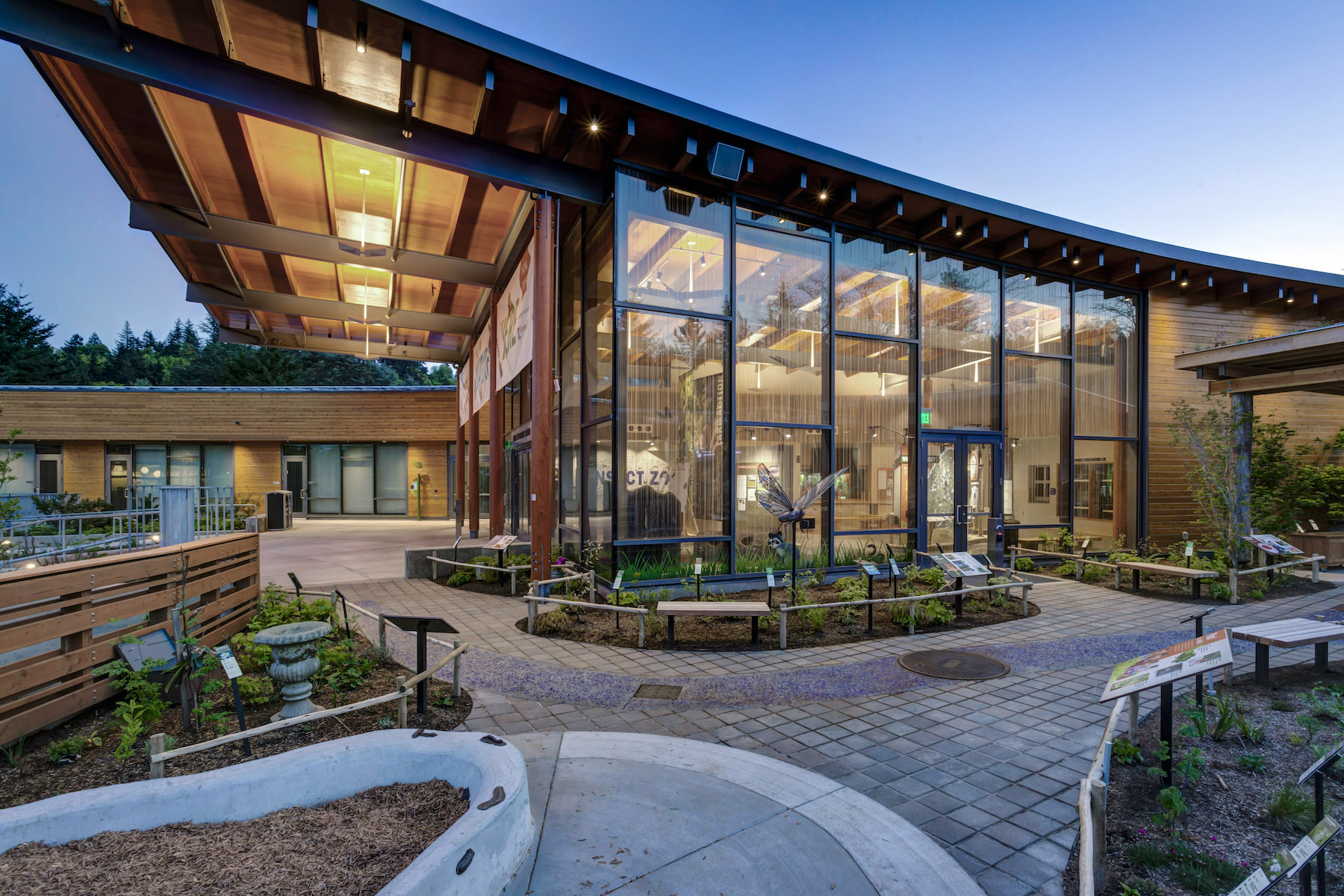While glass is one of the most economical, versatile and beautiful building materials, collisions with glass remain a major cause of bird mortality in North America. This has led to a surge in legislation for bird-safe building materials in North America and beyond.
Last year, the Bird-Safe Buildings Act was passed by the U.S. House of Representatives. Meanwhile, the National Glass Association (NGA) leads a bird-safe glazings advocacy effort. Some municipalities, such as New York City, even require bird-safe glass on certain building types.
Saving Birds Lives While Saving Energy
Industry standards are emerging in relation to bird-friendly glass. Glasses today are often evaluated against the 2″ x 4″ rule, based on the idea that birds will not attempt to fly into spaces they detect as being less than 2 inches high and 4 inches wide. Glasses can be assigned “threat factors,” which measures the potential risks a glass can pose to bird populations.

In coming years, bird-safe glass is expected to gain in preference and find its way into more local building codes and architect demand is expected to accelerate.
Meanwhile, increasingly stringent energy codes and a global drive for sustainability demand excellent energy performance in glass products.
A Sustainable, Bird-Safe Solution
The partnership between Walker Glass and Vitro provides a bird-safe glazing solution while saving energy. AviProtek® E bird-safe low-e glass helps architects and building owners satisfy new regulations for bird-friendly building design, achieve their environmental goals, earn LEED® credits and meet solar-performance targets.
AviProtek® E glass has received numerous accolades over the years and is the only bird-safe glass product available with an Environmental Product Declaration (EPD). This allows architects to secure an additional LEED point for their projects using Pilot Credit 55 related to bird deterrence. It also meets California building legislation requirement (AB262) enacted in 2020. AviProtek® E also has a Health Product Declaration (HPD), which contributes to LEED points in the Materials & Resources (MR) Category.
An Alternative to Ceramic Frit
While ceramic frit is commonly used to satisfy bird-safe glass requirements, acid-etched visual markers — such as those used in AviProtek® E bird-friendly glass — are generally more effective when optimized for energy efficiency. By placing acid-etched visual markers on the first surface of an insulating glass unit (IGU), which is preferred to prevent bird collisions, a solar control, low-e coating can be applied to the second surface—which is ideal for optimizing performance.
Ceramic frit is not optimized for the first surface of IGUs. When ceramic frit is placed on the first surface, the low-e coating must be placed on the third surface, potentially compromising energy performance.
To learn more about bird-friendly glass from Vitro Architectural Glass and Walker Glass, visit www.vitroglazings.com/birds.
Related Stories
| Apr 8, 2014
Fire resistive curtain wall helps The Kensington meet property line requirements
The majority of fire rated glazing applications occur inside a building to allow occupants to exit the building safely or provide an area of refuge during a fire. But what happens when the threat of fire comes from the outside? This was the case for The Kensington, a mixed-use residential building in Boston.
| Apr 2, 2014
8 tips for avoiding thermal bridges in window applications
Aligning thermal breaks and applying air barriers are among the top design and installation tricks recommended by building enclosure experts.
Sponsored | | Mar 30, 2014
Ontario Leisure Centre stays ahead of the curve with channel glass
The new Bradford West Gwillimbury Leisure Centre features a 1,400-sf serpentine channel glass wall that delivers dramatic visual appeal for its residents.
| Mar 13, 2014
Austria's tallest tower shimmers with striking 'folded façade' [slideshow]
The 58-story DC Tower 1 is the first of two high-rises designed by Dominique Perrault Architecture for Vienna's skyline.
| Mar 7, 2014
Thom Mayne's high-tech Emerson College LA campus opens in Hollywood [slideshow]
The $85 million, 10-story vertical campus takes the shape of a massive, shimmering aircraft hangar, housing a sculptural, glass-and-aluminum base building.
| Feb 27, 2014
12 facts about heat-treated glass: Why stronger isn’t always better
Glass is heat-treated for two reasons: the first is to increase its strength to resist external stresses such as wind and snow loads, or thermal loads caused by the sun’s energy. The second is to temper glass so that it meets safety glazing requirements defined by applicable codes or federal standards.
| Feb 27, 2014
PPG earns DOE funding to develop dynamically responsive IR window coating Technology aims to maintain daylighting, control solar heat gain
PPG Industries’ flat glass business has received $312,000 from the U.S. Department of Energy (DOE) to develop a dynamically responsive infrared (IR) window coating that will block heat in the summer to reduce air-conditioning costs and transmit solar heat in the winter to reduce heating costs.
| Feb 5, 2014
Extreme conversion: Atlanta turns high-rise office building into high school
Formerly occupied by IBM, the 11-story Lakeside building is the new home for North Atlanta High School.
| Feb 5, 2014
PPG creates new BIM library, adds custom BIM file creation to tool
PPG Industries announced that it has created a new library of building information and modeling (BIM) files, and that architects and specifiers can now use PPG Glass eVIEW to generate custom BIM files for any conceivable PPG glass configuration.
| Feb 5, 2014
7 towers that define the 'skinny skyscraper' boom [slideshow]
Recent advancements in structural design, combined with the loosening of density and zoning requirements, has opened the door for the so-called "superslim skyscraper."














